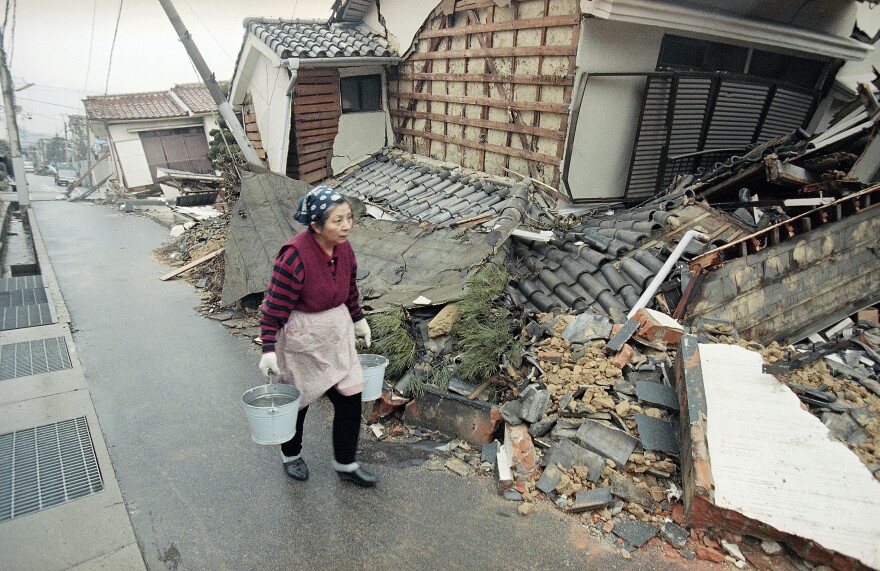When a major earthquake pummeled Kobe, Japan, in 1995, more than 6,000 people were killed, many buried as their traditional wooden homes collapsed under the weight of heavy, unstable tile roofs.
The quake's power was extraordinary and demonstrated Japan wasn't as prepared as it thought it was. Still, it was no match for Japanese resilience.
Many surviving families went directly to schools and spread out quilts in orderly rows in the gym. Boxed meals were handed out around the clock. Bottled water was abundant. The bathrooms remained clean. The trains kept running. The homeless were permitted to make phone calls anywhere in the world free of charge.
Almost immediately, it was clear Kobe would not be defined by the tremor. Kobe had one of the busiest container ports in the world before the quake. A year later, it was operating at the same level.
Earthquakes are equal opportunity destroyers, delivering death and destruction to rich and poor countries alike. Yet they seem cruelest when they flatten places like Nepal, which lacks the resources to prepare for or recover from a devastating tremor. It's not just a brief, cataclysmic event in Nepal. The aftershocks will last for years as the country struggles to return to where it was before the disaster.
When Nepal's earthquake hit, the first number everyone turned to was that awful magnitude number: 7.8.
But , which provides global risk assessment with sponsorship from the European Commission, has developed its own scale, calculating just how vulnerable 191 countries are when it comes to earthquakes, floods, tsunamis, hurricanes and other disasters.
The chart below shows that when it comes to likelihood of being hit by a quake, Japan maxes out at 10 on a scale of 10. Nepal is just a tick behind at 9.9.
But when other factors are incorporated — a country's wealth, emergency services, medical system, the quality of its government and general infrastructure — Japan has a relatively modest overall risk of 2.2 compared with Nepal's still unhealthy 5.3.
The chart also shows that the U.S. and Haiti face similar likelihoods of being hit by earthquakes, floods and tropical storms. But the consequences are likely to vary widely. More than 300,000 people died in Haiti's 2010 earthquake, and despite countless aid projects, reconstruction has moved at a glacial pace.
You can check out all 191 countries here.
The calculations involve a lot of guesswork but capture the way poor countries suffer doubly when disasters strike. The first is the disaster itself, and the second is the enormous long-term burden it places on nations ill-equipped to cope.
Nepal's per capita income is just $700 a year. Few buildings and homes were constructed to be earthquake resistant. Many that will be rebuilt are likely to be equally vulnerable.
The country is also riven by political fault lines as unstable as its geological ones. A Maoist insurgency was launched in the 1990s and eventually led to the abolition of Nepal's monarchy in 2008. The Maoists are now the largest political party in Nepal, and the country's defining political feature has been nonstop feuding in recent years.
IHS Global Insight estimates Nepal's reconstruction costs will be $5 billion over the next five years, requiring a large chunk of the country's resources.
Key sectors have been set back, like tourism, an industry that ranges from backpackers on a budget to mountain climbers paying tens of thousands of dollars for a chance to scale Mount Everest. Saturday's quake touched off an avalanche that killed at least 18 climbers. Last year, the brief climbing season was cut short last year after an avalanche that killed 13 on the mountain.
Aid pledges are already flowing into Nepal, raising the hope that buildings, roads and power systems can be rebuilt and at a higher quality. But there's little precedent for this. Long after the world's attention has moved on, most have struggled to rebuild.
Greg Myre is the international editor for NPR.org. Follow him @gregmyre1.
Copyright 2020 NPR. To see more, visit https://www.npr.org.



